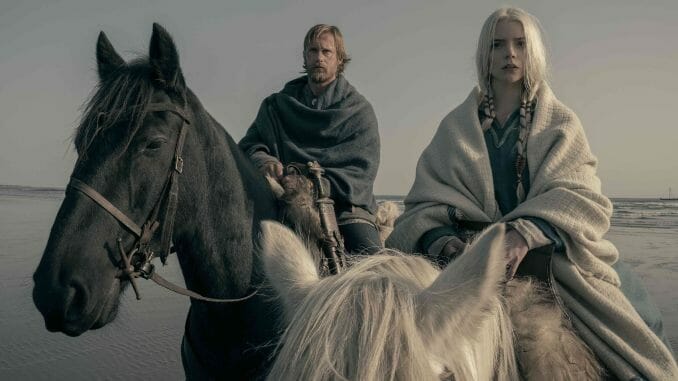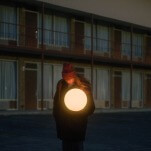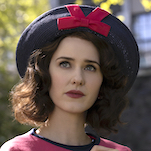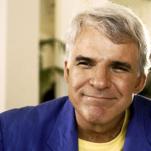The Northman: Vikings, Nazis, and Historical Accuracy

The Northman is director Robert Eggers’ biggest film to date, and its commitment to a form of historical accuracy contributes to its success while also providing fodder for the worst instincts of some people that really like Viking imagery. Vikings captivate the public as simultaneously exotic and familiar, conquerors and barbarians, idealized noble savages, pure-blood white conquering raiders—rather than traders with ties to different geographic spaces and ethnic groups. They’re typically portrayed as violent, which makes for entertaining spectacle. They have religious beliefs we find strange and enticing, making them prime fodder for comic book superheroes and videogame characters. White supremacists in the U.S. and elsewhere have seized onto the imagery and iconography of Viking warriors as part of a fascistic appeal to pure bloodlines and social Darwinism, taking after Hitler’s own adoption of Wagner’s operas (and writings) and drawing on the 19th century pre-Weimar Volkisch movement. At the same time, Vikings are legitimately fascinating, and bad people liking a good thing doesn’t usually make that thing less good, though it can cloud perceptions. Understanding history is an ongoing political process of making meaning, and what constitutes historical accuracy changes over time. While Nazis might fancy The Northman, its attempt at historically accurate Vikings leads to a compelling aesthetic with a much broader appeal.
In the case of The Northman, one might say there is something primal that makes us love stories of betrayed kings reclaiming their kingdoms. The Northman is based on the 13th century tale Life of Amleth, one of the stories Hamlet was based on, a founding legend for Danish history from Saxo Grammaticus’ Gesta Danorum and the Chronicon Lethrense. The Northman is a revenge story, which appeals to us as an expression of presumed moral righteousness that’s frequently shone through the lens of spectacular violence. The Virgin Spring. Unforgiven. Kill Bill. John Wick. A person had something taken from them, they’re willing to kill to take it back. When trafficking in stories of deposed royalty, these tales allow audiences to project themselves into a place of power. With The Northman specifically, vengeance is violence tied up in the familiar majestic language of honor, here wrapped in the garb of Old Norse language and psychedelic mysticism.
We see these ideas and this style throughout media. The Elder Scrolls V: Skyrim, a videogame that applies a Nordic/Viking aesthetic (including the horned helmets that Minnesota’s NFL team took from Wagner’s operas) to tell a story of nativism and independence. It’s a story familiar to anyone that’s been an audience to a tale of the Wild West: The advanced guard of a creeping empire (here pilgrims, there ranchers, over yonder Nords) loses their independence to said empire (British royalty, U.S. businessmen, the Third Empire of Cyrodiil). Those who were once migrants develop a culture of frontiersman and settlers, remaking themselves to fit the place they’ve taken, before being brought low by those that sent them to take it. The Viking aesthetic is there to bestow prestige and intrigue to the familiar—though, in this case, the familiar was the Elder Scrolls series’ impressive open-world fantasy. Assassin’s Creed Valhalla and the 2018 God of War are more recent examples of videogames getting into this culture fad. Admittedly, I was initially skeptical of the aesthetic and connected it with the rise of the far right in the U.S., and the willingness of videogame companies to ignore those implications to make money. While I doubt Ubisoft or Santa Monica Studios are concerned about racists liking their videogames, the facts are that Assassin’s Creed had already handled [Ptolemaic] Egypt and Ancient Greece, and God of War chose Scandinavia over Egypt when doing their own move from Greece. At least, arguably, the former more accurately or more frequently depicts gender dynamics among the Norsemen that were more complicated than the stereotypical depiction of them as patriarchal, pillaging rapists leaves room for.
More directly similar to The Northman is the Netflix series The Last Kingdom, which begins with a boy robbed of the lands of his birthright after Vikings kill his father. He is then raised by Vikings who are betrayed by some extended kinsmen and returns to reclaim his ancestral home from his uncle. Unlike The Northman, though, Uhtred (Alexander Dreymond) is torn between two cultures. Uhtred also doesn’t get the sweet visions and magical realism that Amleth (Alexander Skarsgård) gets, though he does briefly get Succession’s Tom Wambsgans as his father. Vikings and its successor series Vikings: Valhalla draw on the Icelandic sagas The Tale of Ragnar Lodbrok and The Tale of Ragnar’s Sons in addition to The Northman’s own Gesta Danorum. The first series begins in the dawn of the Viking era in the late eighth century, while the second begins in its 11th century twilight. Alan Sepinwall said the show “relies on the inherent appeal of the era,” but what is that “inherent appeal?”
-

-

-

-

-

-

-

-

-

-

-

-

-

-

-

-

-

-

-

-

-

-

-

-

-

-

-

-

-

-

-

-

-

-

-

-

-

-

-

-








































